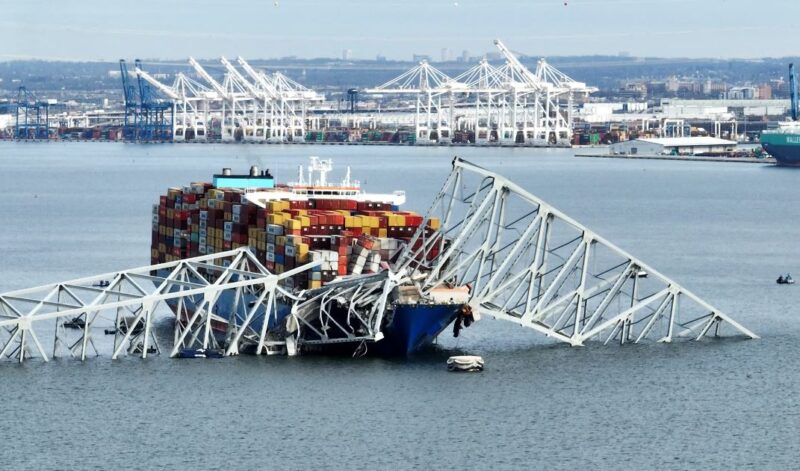
Although ship strikes should be extremely rare, some of the busiest bridges in the United States will likely be hit, according to a recent Johns Hopkins University assessment of bridge vulnerability following the 2024 Francis Scott Key Bridge collapse in Baltimore, Md.
The Key Bridge collapsed after being hit by a container ship. Johns Hopkins engineers, believing chances were high for another collision, launched a risk assessment for U.S. bridges with the goal of estimating the actual chances a large ship hitting significant bridges.
Bridge design standards stipulate that the annual chances should be less than 1 in 10,000 of a bridge collapse from ship collision.
“We wanted to know if what happened to the Key Bridge was a rare occurrence,” Michael Shields, a Johns Hopkins engineer specializing in risk assessment and lead investigator, said. “Was it an aberration? We found it’s really not. In fact, it’s something we should expect to happen every few years.”
Researchers collected 16 years of U.S. Coast Guard data and cross-referenced the geolocated shipping information, hundreds of millions of data points, with port data and bridge data from the National Bridge Inventory. Researchers also examined the American Association of State Highway and Transportation Officials’ ship aberrancy rates.
The researchers predicted seven bridges could expect a major ship collision at least once every 20 to 50 years while others could expect a collision within 129 to 634 years.
If the Key Bridge were still standing, it would have been among the 10 most vulnerable bridges. Researchers learned it would likely have been hit by a ship within 48 years.
The top 10 most vulnerable bridges are: Huey P. Long Bridge, La., collision expected once every 17 years; San Francisco–Oakland Bay Bridge, Calif., collision expected once every 22 years; Crescent City Connection, La., collision expected once every 34 years; Beltway 8 Bridge, Texas, collision expected once every 35 years; Hale Boggs Memorial Bridge, La., collision expected once every 37 years; Bayonne Bridge, N.Y./N.J., collision expected once every 43 years; Fred Hartman Bridge, Texas, collision expected once every 47 years; Martin Luther King Bridge, Texas, collision expected once every 64 years; Sunshine Bridge, La., collision expected once every 71 years; and Rainbow Bridge, Texas, collision expected once every 71 years.
“To keep our bridges safe and operational, we want the chances of a collision strong enough to take down the bridge to be less than one in 10,000 in a given year, not one in a 100,” Shields said. “One in 100 is extremely high. If I look at the San Francisco Bay Bridge, we’re likely to see a major collision once every 22 years. That is huge. We want that number to be thousands of years. That’s tens of years.”
Shields cautions that no two bridges are the same, so what happens following a collision is different from bridge to bridge. A large ship collision may not cause a full collapse but a partial collapse or irreparable damage.
Keeping ship traffic away from the piers for lower the risk of collision as will equipping bridges with protective structures to keep ships from approaching the piers.
Some bridges did not make the Johns Hopkins list because their piers are safely on land. These include Minnesota’s Duluth Lift Bridge and California’s Vincent Thomas Bridge.